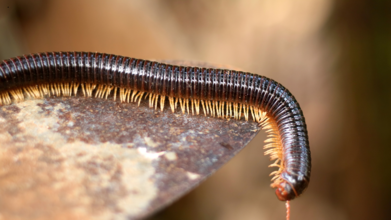- Health Conditions A-Z
- Health & Wellness
- Nutrition
- Fitness
- Health News
- Ayurveda
- Videos
- Medicine A-Z
- Parenting
- Web Stories
Are GLP-1 Drugs The Answer To Childhood Obesity?

If you've heard the chatter about weight loss jabs and injections like Ozempic showing up in pediatrics, you're not alone — and you're likely full of questions. Are they safe for kids? Are they really effective? Or are we rushing into something without knowing the risks?
While childhood obesity rates continue to rise in the U.S., parents and doctors are looking at all possible ways to help kids with weight issues and that now includes GLP-1 receptor agonists, a type of medication first developed for adults with type 2 diabetes. Before making assumptions, though, it's worth taking a closer look at what the latest studies actually report about prescribing these medications to children and adolescents.
Childhood obesity has reached epidemic levels worldwide, threatening the health of millions of young lives. With conventional interventions proving to be of limited value, the question on everyone's mind is: might highly effective weight-loss drugs such as Ozempic (semaglutide) be a safe option for children? As researchers investigate this potential, a heated controversy has erupted, balancing the promise of pharmacological intervention against its deep uncertainties.
Rates of obesity among youth have risen astronomically in the last several decades. Since 1975, global rates of obesity have increased threefold, while childhood and adolescent rates have risen nearly fivefold, as reported by the World Health Organization. In the United States alone, close to 20% of children aged under 18 have obesity—a condition that has been linked with a plethora of lifetime health dangers, including type 2 diabetes, cardiovascular disease, chronic kidney disease, and severe mental illness.
Likewise, in the UK, data from the NHS in 2022 reported that 15% of children aged between 2 and 15 were considered obese. If not treated, projections by the World Obesity Federation estimate that 250 million children worldwide may be suffering from obesity by 2030. It's not only medical but also economic—lifetime healthcare expenses for addressing childhood obesity in the U.S. can be as much as $20,000 more than their healthy-weight peers.
Is It Safe or Just a Quick Fix for Kids?
Glucagon-like peptide-1 (GLP-1) receptor agonists such as Ozempic and Wegovy have transformed the treatment of adult obesity. These drugs simulate a natural hormone that slows down gastric emptying, enhances sensations of fullness, and suppresses appetite. In adults, GLP-1 treatments have shown impressive advantages not just for weight loss but also for diseases like type 2 diabetes, heart disease, and even Alzheimer's disease, potentially.
As a result of their success in adults, researchers have been looking to see if such benefits can translate to children. A landmark study in 2022 in the New England Journal of Medicine enrolled 201 teens between the ages of 12 and 17. Following 68 weeks of once-weekly injections of semaglutide plus lifestyle intervention, 62% of those enrolled lost at least 10% of their weight, whereas only 8% of those receiving a placebo did. More than half had lost 15% or more of their weight, highlighting the efficacy of the drug.
Worried About Side Effects?
It is to be expected that parents would worry about adding medications such as GLP-1 agonists — including Ozempic — to their child's treatment regimen. Recent research has determined that while GLP-1 injections are very effective in helping adolescents who have obesity lose weight, they do have side effects. The most often reported are nausea, vomiting, diarrhea, and abdominal pain. Fatigue and dizziness are also experienced by some children as their body adapts to the medication.
Studies in medical literature point out that although these side effects are usually tolerable, the long-term effect of GLP-1 administration in young, developing bodies is still under assessment. Clinical trials to date indicate that the majority of side effects are mild to moderate and decrease over time. Nevertheless, serious but rare risks such as pancreatitis and gallbladder disease have been reported, emphasizing the need for continued medical monitoring.
Official Guidelines for Using GLP-1 Drugs in Children With Obesity
Regulatory agencies are gradually embracing these findings in the wake of this. Ozempic itself is not yet approved for pediatric use, but a higher-dose formulation of semaglutide called Wegovy was approved by the FDA in 2022 for adolescents 12 years and above with obesity.
Canada recently revised its national guidelines, suggesting that children as young as 12 might be candidates for GLP-1 therapies if lifestyle interventions alone are not enough. The new guidelines, developed by more than 50 experts and including feedback from families with obesity, focus on a comprehensive approach: integrating behavioral strategies with pharmacologic or surgical approaches when needed.
Are Weight Loss Injections the Right Choice for Managing Childhood Obesity?
Despite growing enthusiasm, the use of Ozempic in young populations remains highly controversial. Critics argue that the long-term safety of GLP-1 agonists in children is unknown. Studies to date have been limited in scope, largely industry-sponsored, and have not adequately measured potential psychological side effects, including risks of disordered eating and body dissatisfaction.
Youngsters and adolescents are especially at risk. The body changes of adolescence, along with strong social demands, make adolescent weight control tricky. Specialists alert that medicalizing weight loss at this pivotal time of development potentially has unforeseen mental health costs, including increased vulnerability to eating disorders, worry, and despondency.
Additionally, there are no long-term data on the effects of these drugs on growth, hormonal development, or future fertility. In recognition of these uncertainties, the U.S. Preventive Services Task Force has suggested against the routine use of weight-loss medications in children due to a lack of evidence of long-term safety.
How is Obesity In Kids Treated Currently?
Structured lifestyle interventions—focusing on diet, exercise, and behavioral modification—are currently the first-line management of childhood obesity. They are only abandoned when these prove unsuccessful, and more intrusive measures, such as pharmacotherapy or bariatric surgery, are then sought. Conventional methods have found it difficult to achieve success, though, considering the environmental and socio-economic determinants affecting a child's capacity for a healthy way of living.
Obese adolescents are frequently bullied, stigmatized, and subject to systemic barriers that reinforce their condition. These events not only complicate weight loss but also contribute to severe mental health issues, such as self-injury and suicidal thoughts.
What Pediatricians Want Parents to Know About Ozempic and Childhood Obesity
When managing childhood obesity, pediatricians emphasize that weight loss injections such as Ozempic are not meant to be a magic pill. Specialists highlight that Ozempic is intended to complement not substitute for improved eating habits, more physical activity, and emotional balance.
Pediatricians encourage parents to understand that obesity is a complex, chronic illness that is typically driven by genetics, environment, and behavior. Weight loss shots can be a useful tool for kids with severe obesity, particularly when standard therapies have failed. But physicians warn that unless the underlying causes — including diet, screen time, and mental health — are tackled, the rewards of Ozempic may not last long.
Although GLP-1 receptor agonists represent an exciting new agent for the treatment of pediatric obesity, their introduction should be carefully considered. Physician experts recommend scrupulous selection of patients, thorough counseling, and regular follow-up to confirm that medications form part of an overall supportive plan of care to meet physical as well as psychologic needs.
Additional independent, long-term research is essential to truly appreciate the consequences of prescribing drugs such as Ozempic to children. As the situation continues to change, clinicians, families, and policymakers need to weigh the imperative to treat the obesity epidemic against the moral obligation to protect children's future health.
In the meantime, the application of Ozempic and other such drugs to adolescents is a promising but complicated territory one that requires cautious deliberation, intense study, and an unwavering commitment to placing children's health interests above all else.
What Does Retracted Eardrum Mean? Here's All That You Need To Know About

Credits: Canva
A retracted eardrum, also called tympanic membrane atelectasis, is a condition where the eardrum gets pulled inward toward the middle ear. Normally, the eardrum (or tympanic membrane) acts as a boundary between the outer and middle ear, transmitting sound vibrations to tiny bones that help us hear. But when it collapses inward, that delicate process can be disrupted.
The condition is often silent at first, meaning people may not realize they have it. But in some cases, it can escalate, causing discomfort or even permanent hearing damage.
Spotting the Symptoms
In most cases, a retracted eardrum doesn’t cause any noticeable symptoms. But when the retraction becomes severe enough to affect structures inside the ear, individuals may experience:
- Earache
- Temporary hearing loss
- Fluid discharge from the ear
If left untreated, a chronic retracted eardrum can lead to permanent hearing loss.
Why Does It Happen?
The most common cause of a retracted eardrum is Eustachian tube dysfunction. These narrow tubes connect the middle ear to the back of the nose and help regulate ear pressure.
When they don’t work properly, pressure inside the ear drops, effectively pulling the eardrum inward.
Some common triggers include:
- Recent or recurring ear infections
- Cleft palate
- A poorly healed eardrum after rupture
- Enlarged tonsils or adenoids
Upper respiratory infections, such as the common cold
How Doctors Diagnose It
Diagnosis typically begins with a discussion about symptoms and any recent infections. A doctor will then use an otoscope, a tool with a light, to look into the ear canal. This allows them to visually confirm if the eardrum is abnormally positioned or collapsed.
Treatment Options: When to Wait and When to Act
Not all retracted eardrums require immediate treatment. In mild cases, doctors often recommend a “watch and wait” approach, as pressure may normalize naturally over a few months.
For more advanced cases, several interventions are possible:
Decongestants or nasal steroids: These can improve airflow in the ear and relieve pressure.
The Valsalva maneuver: This self-administered technique involves closing your mouth, pinching your nose, and gently blowing as if trying to pop your ears. It should be performed under medical guidance.
If the condition begins to affect hearing or causes persistent pain, surgical options may be considered.
Surgical Interventions
Two common surgical treatments are:
Tube Insertion (Myringotomy):
Often used in children with recurring ear infections, this procedure involves placing small tubes into the eardrum to help ventilate the middle ear.
Tympanoplasty:
In more severe cases, part of the damaged eardrum may be removed and replaced with cartilage from the outer ear. This stiffens the eardrum, preventing future collapses.
What’s the Prognosis?
The outlook largely depends on the severity. Minor retractions usually resolve without intervention and don’t cause long-term damage. However, more serious cases, especially those that persist or press against ear bones, may result in hearing loss and need medical or surgical correction.
Experts recommend seeking medical attention if you notice ear discomfort, hearing changes, or frequent infections. Early diagnosis can prevent long-term issues and protect one of your most important senses, your hearing.
Could Millipedes Help Treat Pain And Parkinson’s?

Credits: Canva
In a surprising discovery that bridges the gap between creepy crawlies and cutting-edge neuroscience, researchers at Virginia Tech have identified unique compounds in millipede secretions that could pave the way for future treatments for pain and neurological diseases like Parkinson’s, depression, and schizophrenia.
Led by chemist Emily Meyers, the research team uncovered naturally occurring alkaloids in the defensive secretions of the Andrognathus corticarius, a species known colloquially as the Hokie millipede. The millipede, which lives under decomposing leaves and branches on the university’s Blacksburg campus, produces a chemical cocktail that not only deters predators but may influence neuroreceptors in the brain.
“These compounds are quite complex, so they’re going to take some time to synthesize in the lab,” said Meyers, who specializes in studying underexplored ecological sources for potential new drugs.
A Hidden Chemical Arsenal
The compounds, dubbed andrognathanols and andrognathines by Meyers’ team, belong to a class of complex alkaloids. They were discovered after researchers collected several millipedes from wooded areas on campus and analyzed the contents of their defensive glands using a suite of chemical tools.
The results were striking: some of these secretions had a disorienting effect on ants, one of the millipede’s presumed predators. But that’s not all, several of the compounds were found to interact with a neuroreceptor known as Sigma-1. This receptor has been linked to multiple brain disorders, including schizophrenia, depression, Lou Gehrig’s disease (ALS), and Parkinson’s disease.
In addition to warding off predators, the researchers discovered that the compounds may also serve a social function, possibly helping millipedes signal their location to family members in leaf-littered environments.
From Defense to Drug Discovery
This study, recently published in the Journal of the American Chemical Society, is not Meyers’ first foray into studying arthropod chemistry. She has been collaborating with entomologist Paul Marek, and together, they have previously suggested that the family of alkaloids found in millipede secretions could have significant therapeutic potential.
“Millipedes have been around for hundreds of millions of years. They’ve developed these intricate chemical defense systems, and we’re only beginning to understand their value,” said Meyers.
While the compounds show promise, the next hurdle is a familiar one in drug discovery: scalability. The compounds exist in trace amounts in the wild, and researchers need larger quantities for in-depth testing and potential pharmaceutical development.
The Road Ahead
The team is now exploring partnerships with laboratories that can synthesize the compounds in bulk, which would allow for further testing on their biological activity and medicinal properties. Meyers emphasized that while the research is still in its early stages, the potential applications are broad, from pain management to novel treatments for complex neurological conditions.
“Nature has always been a wellspring of inspiration for medicine,” said Meyers. “And sometimes, the most powerful solutions come from the smallest and most unexpected creatures, like a tiny millipede under a log.”
With this groundbreaking discovery, scientists are reminded once again that the natural world may hold secrets that, once unlocked, could transform human health in unimaginable ways.
Low Grade Prostate Cancer Could Be Increasing Health Risks By 30%

(Credit-Canva)
Cancers are unpredictable and can be either containable or completely wreck your health. To make cancer treatments and research better, healthcare professionals use stages and characteristics, making it easier for us to categorize and identify how far along the disease is. However, recent research has been questioning our stance on this particular cancer, saying it could be worse than what we had believed.
A recent study has found that a specific type of prostate tumor, called Grade Group one (GG1), might not be as harmless as once believed. While many doctors consider these tumors to be at low risk of spreading and recommend monitoring them, the new research suggests the true risk might be higher. In fact, the study indicates that up to 30% of these cases could be more serious than doctors think, and a closer look could save lives.
Challenge with Current Practices
For years, men diagnosed with a GG1 tumor were often told to skip immediate treatment and instead undergo "active surveillance." This means they were regularly checked with blood tests and follow-up biopsies to see if the tumor was growing.
However, researchers point out a key problem: a single biopsy might miss more aggressive cancer cells located in a different part of the prostate. This could lead to a patient being undertreated, which could have serious consequences later on if the cancer grows. The authors believe that relying on just one biopsy to decide on treatment is a flawed approach.
What Are Low-Grade Prostate Tumors?
According to a 2022 review published in the Urological Research Society, the lowest grade of prostate cancer, called ISUP Grade Group 1 (GG1), grows very slowly. Because it is so harmless, some experts have suggested that we should stop calling it "cancer" at all. This has been done before for similar low-risk tumors in the bladder and thyroid.
The review summarized that even though GG1 tumors have some characteristics of cancer, their behavior is much more like a harmless, non-cancerous growth. The authors suggest that renaming GG1 prostate cancer could have several benefits:
- It could help prevent unnecessary treatments.
- It would reduce a patient's fear and stress.
- It could lower the financial costs for patients and the healthcare system.
Study's Findings
Challenging the view of previous studies, researchers sought to get a clearer understanding. To get a more accurate picture, the research team looked at data from over 300,000 men. Among those who were initially diagnosed with GG1 tumors, the team used additional factors like PSA levels and tumor size, which can be better indicators of risk.
By combining all this information, they found that a significant number of men—more than 18,000—were actually at higher risk and should have received more aggressive treatment like radiation or surgery. This data strongly suggests that as many as 30% of GG1 diagnoses might be underestimated, leaving many men without the full treatment they need.
Call for Change
The authors of the study are urging doctors to reconsider how they evaluate GG1 tumors. They emphasize that a "low grade" diagnosis from a biopsy isn't the same as a guaranteed "low risk" for the patient. They believe it's a doctor's responsibility to use all available data to accurately assess a man's individual risk. The goal is to ensure that those who need treatment get it, while still safely recommending active surveillance for the men who are truly at low risk.
© 2024 Bennett, Coleman & Company Limited

